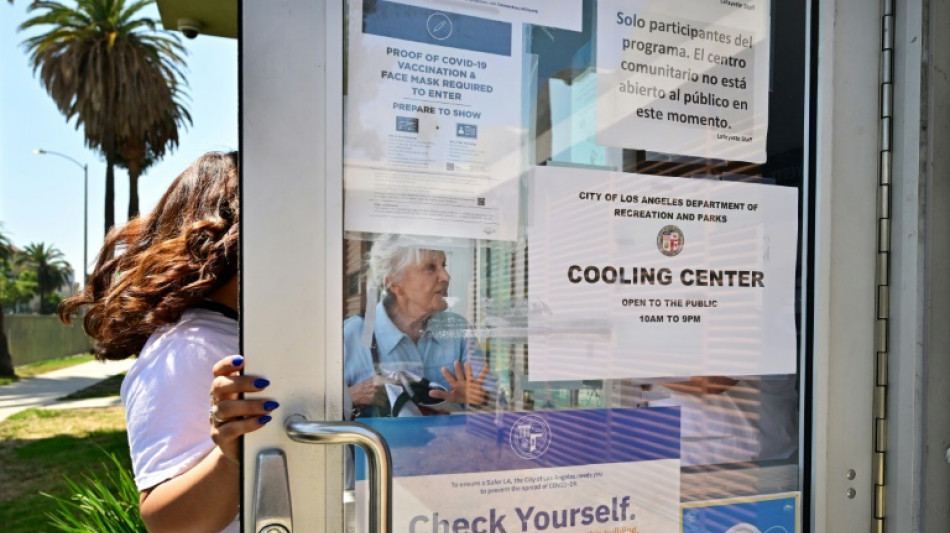
California opens cooling centers for heat wave vulnerable

It is too hot in Nelly Amaya's place when the mercury surges into triple digits, driven by the punishing heat wave gripping the western United States.
"We don't have air conditioning at our house, we only have a fan," Amaya, a retiree, told AFP.
"We come here because we can't stay at home."
Amaya is one of hundreds of people in Los Angeles who are making use of the 40 cooling centers set up by the county's emergency department as a fearsome heat dome sends temperatures soaring.
The centers have been established in libraries, recreation and park facilities, and senior living facilities, offering shelter in air-conditioned rooms and cold drinks during the heat of the day.
Forecasters have issued an excessive heat warning for most of California, as well as parts of Nevada and Arizona, with thermometers logging highs over 110 Fahrenheit (43 Celsius) in some places.
The oppressive heat is expected to last well into next week, smothering a holiday weekend, with little relief in the way of cooler nights.
Doctors say when temperatures remain elevated for long periods -- particularly overnight -- it puts strains on the human body that can cause a cascade of illness, sometimes even leading to death.
Joseph Riser of the Los Angeles emergency management department said the city was doing its best to look out for those in need of help when the mercury rises over 100 Fahrenheit.
"Once that hits that peak... then the plans we have for adverse weather kick in and we begin rallying the troops, getting the supplies, making sure which centers can be open and that we have enough," he said.
- 'Stay hydrated' -
The effects of intense heat are not evenly felt across societies, and tend to be more acute in poorer and more marginalized communities.
Homeless people or those who work outside during the heat of the day are obviously at risk, but so are people living in neighborhoods without tree cover, or near to sources of pollution like roads.
"It may be people who are living in homes where there's no air conditioning, and maybe people who are unhoused," Riser said.
"It may be just young people seeking shelter from the heat, from maybe a home where the air conditioning doesn't work very well."
For Ruth Rivera, the Lafayette Park center near downtown Los Angeles is a godsend.
"It helps a lot, we have to stay hydrated, because it's really hot outside," she said.
The operator of California's creaking electricity grid on Friday called a third consecutive "Flex Alert," asking households to conserve power and turn up their thermostats to help reduce power demand.
"Reducing energy use during a Flex Alert can help stabilize the power grid during tight supply conditions and prevent further emergency measures, including rotating power outages," California Independent Service Operator said.
The heat dome is expected to last well into next week, with thermometers set to peak at 116 degrees Fahrenheit in some densely populated areas around Los Angeles over the upcoming Labor Day holiday weekend.
It is not unusual for southern California to experience heat waves in September, but temperatures above 100 degrees Fahrenheit are considered hot even for a place almost perpetually baked by sunshine.
Scientists say global warming, which is being driven chiefly by the unchecked burning of fossil fuels, is making natural weather variations more extreme.
Heat waves are getting hotter and more intense, while storms are getting wetter and, in many cases, more dangerous.
N.Johns--TNT